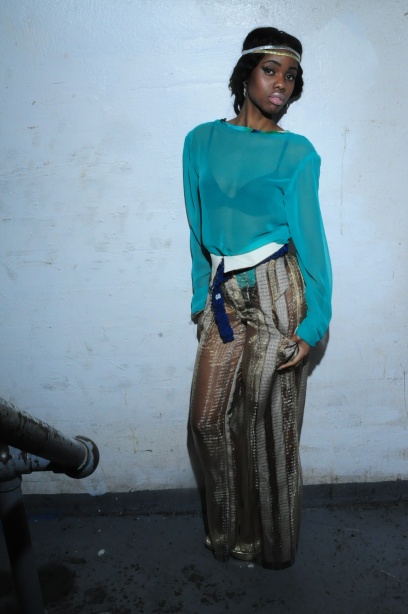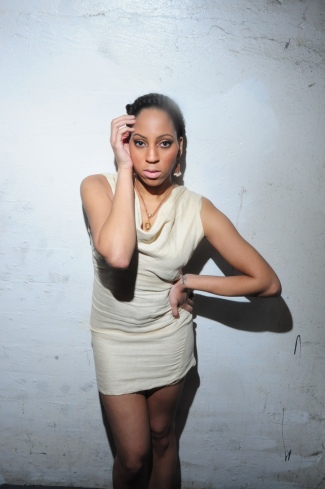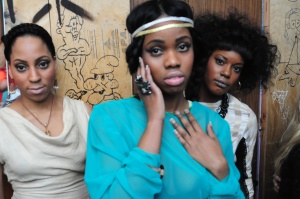S/S 2012 Mini-Collection Coming soon!!
Here are a few of the looks I previewed at a concert in Brooklyn. The jewelry will be posted soon.
These are only a few of the pieces that premiered at the concert. All accessories worn were also made by 1930by ChrisJackson.
Visit the Shop Page….New Things will be up soon!!
Awesome new pictures every Thursdays featuring my
jewelry…..Don’t forget to visit the SHOP Page.
New things are in the works people!! Bigger & better
things are coming.
Lets Get excited!!
There will be more wonderful things coming for you guys. Keep the dream alive!!
Don’t Forget the Shop page. The only way to keep the line going.
These are all my sample pieces. If you need something made in a specific size. Feel free to e-mail us, even if we’re sold out of one style we are more than happy to replicate another piece in the same likeness.** The Picture will take you to our shop page.
Don’t do your homework off my blog. Shop!! Thanks!
**All pieces are handmade, therefore not guaranteeing the same product each time. **
L’Histoire de Mode~Crochet

Crochet
Crochet (pronounced /kroʊˈʃeɪ/) is a process of creating fabric from yarn using a crochet hook. The word is derived from the French word “crochet”, meaning hook. Crocheting, similar to knitting, consists of pulling loops of yarn through other loops. Crochet differs from knitting in that only one loop is active at one time (the sole exception being Tunisian crochet), and that a single crochet hook is used instead of two knitting needles.
Lis Paludan theorizes that crochet evolved from traditional practices
in Arabia, South America, or China, but there is no decisive evidence of the
craft being performed before its popularity in Europe during the 19th century
The earliest written reference to crochet refers to shepherd’s knitting from
The Memoirs of a Highland Lady by Elizabeth Grant in the 19th century.
The first published crochet patterns appeared in the Dutch magazine Pénélopé in
1824. Other indicators that crochet was new in the 19th century include the
1847 publication A Winter’s Gift, which provides detailed instructions for
performing crochet stitches, although it presumes that readers
understand the basics of other needlecrafts. Early references to
the craft in Godey’s Lady’s Book in 1846 and 1847
refer to crotchet before the
spelling standardized
in 1848.
Knit and knotted textiles survive from very early periods,
but there are no surviving samples of crocheted fabric in
any ethnological collection, or archeological source prior to
1800. These writers point to the tambour hooks used in
tambour embroidery in France in the 18th century, and
contend that the hooking of loops through fine fabric in tambour
work evolved into “crochet in the air.” Most samples of early work
claimed to be crochet turn out to actually be samples of nålebinding.
Donna Kooler identifies a problem with the tambour hypothesis:
period tambour hooks that survive in modern collections cannot
produce crochet because the integral wing nut necessary for tambour
work interferes with attempts at crochet. Kooler proposes that early
industrialization is key to the development of crochet. Machine spun
cotton thread became widely available and inexpensive in Europe and
North America after the invention of the cotton gin and the spinning jenny,
displacing hand spun linen for many uses. Crochet technique consumes
more thread than comparable textile production methods
and cotton is well suited to crochet.
Early crochet hooks ranged from primitive bent needles in a
cork handle, used by poor Irish lace workers, to expensively crafted
silver, brass, steel, ivory and bone hooks set into a variety of handles, some of which
were better designed to show off a lady’s hands than they were to work with thread.
By the early 1840s, instructions for crochet were being published
in England, particularly by Eleanor Riego de la Blanchardiere and Frances Lambert.
These early patterns called for cotton and linen thread for lace,
and wool yarn for clothing,
often in vivid color combinations.
In the 19th century, as Ireland was facing the Great Irish Famine (1845-1849),
crochet lace work was introduced as a form of famine relief (the production of crocheted
lace being an alternative way of making money for impoverished Irish workers).
Mademoiselle Riego de la Blanchardiere is generally credited with the
invention of Irish Crochet, publishing the first book of patterns in 1846.
Irish lace became popular in Europe and America, and was
made in quantity until the first World War.
Fashions in crochet changed with the end of the Victorian era in the 1890s.
Crocheted laces in the new Edwardian era, peaking between 1910 and 1920, became
even more elaborate in texture and complicated stitching.The strong Victorian
colours disappeared, though, and new publications called for white or pale threads,
except for fancy purses, which were often crocheted of brightly colored silk
and elaborately beaded. After World War I, far fewer crochet patterns were published,
and most of them were simplified versions of the early 20th century patterns.
After World War II, from the late 40s until the early 60s, there was a resurgence in
interest in home crafts, particularly in the United States, with many new
and imaginative crochet designs published for colorful doilies, potholders,
and other home items, along with updates of earlier publications. These patterns
called for thicker threads and yarns than in earlier patterns and included
wonderful variegated colors. The craft remained primarily a homemaker’s art
until the late 1960s and early 1970s, when the new generation picked up on crochet
and popularized granny squares, a motif worked in the round and incorporating
bright colors. Although crochet underwent a subsequent decline in popularity,
the early 21st century has seen a revival of interest in handcrafts and DIY, as well
as great strides in improvement of the quality and varieties of yarn. There are many
more new pattern books with modern patterns being printed, and most yarn
stores now offer crochet lessons in addition to the traditional knitting lessons.
Filet crochet, Tunisian crochet, broomstick lace, hairpin lace, cro-hooking, and
Irish crochet are all variants of the basic crochet method.
Crochet patterns have an underlying mathematical
structure and have been used to illustrate shapes
in hyperbolic geometry that are difficult to reproduce
using other media or are difficult to understand
when viewed two-dimensionally.
Materials:
Hook
The Crochet hook comes in many sizes and materials,
such as bone, bamboo, aluminum, plastic and steel.
Steel crochet hooks range from 0.4 to
3.5 millimeters in the size of the hook,
or from 00 to 16 in American sizing.
These hooks are used for fine crochet work.
Aluminum, bamboo, and plastic crochet
hooks are available from 2.5 to 19 millimeters
in hook size, or from B to S in American sizing.
There are also many artisan-made hooks,
most of hand-turned wood, sometimes
decorated with semi-precious stones or beads.
Crochet hooks used for Tunisian crochet are elongated and have a stopper at
the end of the handle, while double-ended crochet hooks have a hook on both ends
of the handle. There is also a double hooked apparatus called a Cro-hook that has become
popular. Also, a Hair-Pin Crochet Hook is often used to create lacey and long stitches.
For crocheting you will also need some type of material that will be crocheted,
which is most commonly yarn or thread.
Other equipment includes cardboard cut-outs, which can be
used to make tassels, fringe, and many other items; a pom-pom circle,
used to make pom-poms; a tape measure, a gauge measure, both
used for measuring crocheted work and counting stitches; a row counter;
and occasionally plastic rings, which are used for special projects.
Yarn
Yarn for crochet is usually sold as balls or skeins (hanks), although it may also be
wound on spools or cones. Skeins and balls are generally sold with a yarn-band, a label that describes
the yarn’s weight, length, dye lot, fiber content, washing instructions, suggested
needle size, likely gauge, etc. It is common practice to save the yarn band for future reference,
especially if additional skeins must be purchased. Crocheters generally ensure that the yarn
for a project comes from a single dye lot. The dye lot specifies a group of skeins that were
dyed together and thus have precisely the same color; skeins from different dye-lots,
even if very similar in color, are usually slightly different and may produce a
visible stripe when crocheted together. If insufficient yarn of a single dye lot
is bought to complete a project, additional skeins of the same dye lot can
sometimes be obtained from other yarn stores or online.
The thickness or weight of the yarn is a significant factor in
determining the gauge, i.e., how many stitches and rows are
required to cover a given area for a given stitch pattern. Thicker
yarns generally require thicker crocheting hooks, whereas thinner
yarns may be knit with thick or thin needles. Hence, thicker yarns
generally require fewer stitches, and therefore less time, to knit
up a given garment. Patterns and motifs are coarser with thicker
yarns; thicker yarns produce bold visual effects, whereas thinner
yarns are best for refined patterns. Yarns are grouped by thickness
into six categories: superfine, fine, light, medium, bulky and
superbulky; quantitatively, thickness is measured by the
number of wraps per inch (WPI). The related weight
per unit length is usually measured in tex or dernier.
Before use, one would typically transform a hank into a ball where the yarn
emerges from the center of the ball; this making the work easier by preventing the
yarn from becoming easily tangled. This transformation may be done
by hand, or with a device known as a ballwinder.
A yarn’s usefulness is judged by several factors, such as its loft (its ability to trap air),
its resilience (elasticity under tension), its washability and colorfastness,
its hand (its feel, particularly softness vs. scratchiness), its durability against abrasion,
its resistance to pilling, its hairiness (fuzziness), its tendency to twist or untwist, its overall
weight and drape, its blocking and felting qualities, its comfort (breathability,
moisture absorption, wicking properties) and of course its look, which includes its
color, sheen, smoothness and ornamental features. Other factors include allergenicity;
speed of drying; resistance to chemicals, moths, and mildew; melting point and
flammability; retention of static electricity; and the propensity to become stained and to
accept dyes. Different factors may be more significant than others for different projects, so
there is no one “best” yarn. The resilience and propensity to (un)twist are general
properties that affect the ease to work with.
Although crochet may be done with ribbons, metal wire or more exotic
filaments, most yarns are made by spinning fibers. In spinning,
the fibers are twisted so that the yarn resists breaking under tension;
the twisting may be done in either direction, resulting in an Z-twist
or S-twist yarn. If the fibers are first aligned by combing them, the
yarn is smoother and called a worsted; by contrast, if the fibers are
carded but not combed, the yarn is fuzzier and called woolen-spun. The
fibers making up a yarn may be continuous filament fibers such as silk and
many synthetics, or they may be staples (fibers of an average length, typically
a few inches); naturally filament fibers are sometimes cut up into staples before
spinning. The strength of the spun yarn against breaking is determined
by the amount of twist, the length of the fibers and the thickness of the
yarn. In general, yarns become stronger with more twist (also called worst),
longer fibers and thicker yarns (more fibers); for example, thinner
yarns require more twist than do thicker yarns to resist breaking
under tension. The thickness of the yarn may vary along its l
ength; a slub is a much thicker section in which a mass
of fibers is incorporated into the yarn.
The spun fibers are generally divided into animal fibers, plant and synthetic fibers.
These fiber types are chemically different, corresponding to proteins, carbohydrates and
synthetic polymers, respectively. Animal fibers include silk, but generally are l
ong hairs of animals such as sheep (wool), goat (angora, or cashmere goat), rabbit
(angora), llama, alpaca, dog, cat, camel, yak, and muskox (qiviut). Plants used for
fibers include cotton, flax (for linen), bamboo, ramie, hemp, jute, nettle, raffia, yucca,
coconut husk, banana trees, soy and corn. Rayon and acetate fibers are also produced from
cellulose mainly derived from trees. Common synthetic fibers include acrylics,[10] polyesters such
as dacron and ingeo, nylon and other polyamides, and olefins such as polypropylene. Of these types,
wool is generally favored for crochet, chiefly owing to its superior elasticity, warmth and
(sometimes) felting; however, wool is generally less convenient to clean and some people are
allergic to it. It is also common to blend different fibers in the yarn, e.g., 85% alpaca and 15%
silk. Even within a type of fiber, there can be great variety in the length and thickness of the
fibers; for example, Merino wool and Egyptian cotton are favored because they produce
exceptionally long, thin (fine) fibers for their type.
A single spun yarn may be crochet as is, or braided or plied with another.
In plying, two or more yarns are spun together, almost always in the
opposite sense from which they were spun individually; for example,
two Z-twist yarns are usually plied with an S-twist. The opposing
twist relieves some of the yarns’ tendency to curl up and produces
a thicker, balanced yarn. Plied yarns may themselves be plied together,
producing cabled yarns or multi-stranded yarns. Sometimes, the
yarns being plied are fed at different rates, so that one yarn loops
around the other, as in bouclé. The single yarns may be dyed
separately before plying, or afterwords to give the
yarn a uniform look.
The dyeing of yarns is a complex art. Yarns need not be dyed; or they may be
dyed one color, or a great variety of colors. Dyeing may be done industrially, by hand
or even hand-painted onto the yarn. A great variety of synthetic dyes have been developed
since the synthesis of indigo dye in the mid-19th century; however, natural dyes are also possible,
although they are generally less brilliant. The color-scheme of a yarn is sometimes called its colorway.
Variegated yarns can produce interesting visual effects,
such as diagonal stripes; conversely.
How it’s Done
Crocheted fabric is begun by placing a slip-knot loop on the hook,
pulling another loop through the first loop, and repeating this process
to create a chain of a suitable length. The chain is either turned and worked
in rows, or joined to the beginning of the row with a slip stitch and worked in
rounds. Rounds can also be created by working many stitches into a single loop.
Stitches are made by pulling one or more loops through each loop of the chain.
At any one time at the end of a stitch, there is only one loop left on the hook.
Tunisian crochet, however, draws all of the loops for an entire row onto a long
hook before working them off one at a time.
Samples:



Free Crochet Lace Pattern, click the photo below. Something to start us off with….
MORENA PEREZ, has been announced WINNER!!
Congratulations to Morena Perez!! You won the first ever 1930giveaway jewelry contest! E-mail us at 1930bychrisjackson@gmail.com to claim your gifts.
Thank you ALL for participating in our first ever contest. Keep coming back for more contest where we giveaway jewelry, clothes, bags, & possibly SHOES!!
~Thanks~
Chris J.
ALMOST THERE!! 1930 VIEWS CONTEST CLOSING SOON!!
CLICK PHOTO FOR DETAILS.
ONCE THE SITE VIEW IS AT 1930 CONTEST IS OVER!
ENTER FOR YOUR CHANCE TO WIN FREE JEWELRY DESIGNED BY US UNDER OUR SHOP PAGE.
**More contests coming soon!**
SHOP PAGE Handmade jewelry
Visit the SHOP PAGE. All jewelry is handmade. Everything is under $30 for the mini collection. Take a part while items still last. Click the picture to begin shopping.
DON’T FORGET THE SHOP PAGE
DON’T FORGET TO GO THE SHOP PAGE & PUT IN AN ORDER. CLOTHES COMING SOON!!
JEWELRY CONEST COMING UP!!
CHECKOUT OUR JEWELRY PAGE



















JEWELRY CONTEST
1930by ChrisJackson is celebrating YOU for all of the support you have given us! With this we’re offering a Jewelry Giveaway! To make this interesting-we will allow you to choose YOUR own jewelry elements for your prize-any style of Necklace or Ring we have on the shop page! We want to make sure you enjoy your prize ^_^
**Click the above POSTER for more information on Rules & Regulations**
Rate this:
February 15, 2011 | Categories: 1930 by Chris Jackson, Contests, Fashion, Jewelry, Necklaces, Rings | Tags: 1930, 1930 by Chris Jackson, Accessory, affordable, Balenciaga, bracelets, Bridget Ploof, Bridgett Ploof, CHANEL, Charles Frederick Worth, Charles Worth, Chris Carr, Chris Jackson, Comment Contest, Daily Updates, earrings, Facebook Contest, fashion, Giveaway, Handmade, Haute Couture, Ivory, Jewelry, Jewelry Contest, Leather, Necklace, Photography, RINGS, Sexy, Shop, Shop Contests, Shopping, Stone, Twitter Contest, Vogue | Leave a comment